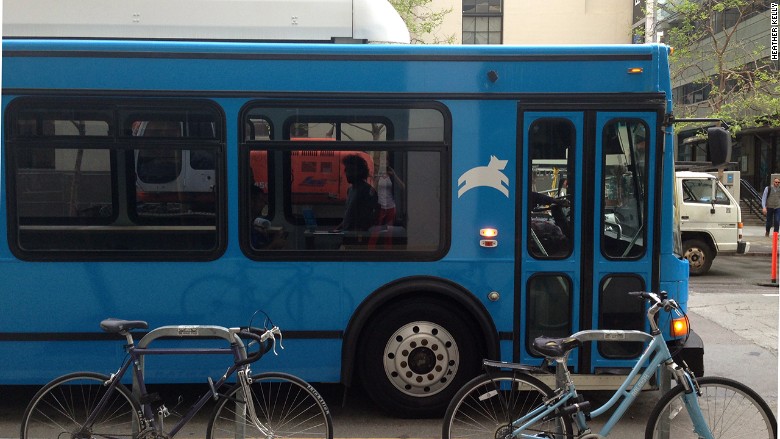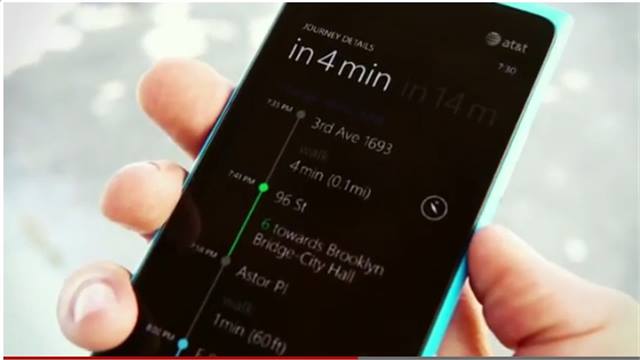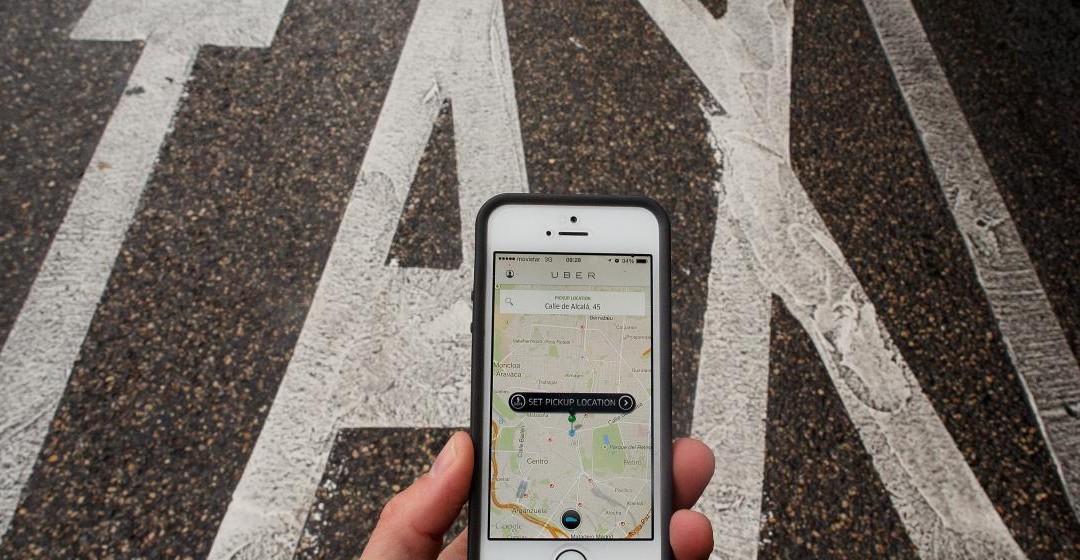
by mattchristensen00 | Apr 15, 2015 |
By Dara Lee What sold Matt Lee on the latest transportation startup was the promise that he could sit down during his commute to work. Lee, who works in downtown San Francisco, has about a three-mile ride from his home in the Haight-Ashbury neighborhood, which is roughly in the center of the city, to his office. Typically that trip takes about 30 minutes, and sometimes the buses are so full he has to wait for one or two to pass before he can squeeze on for standing room. So Lee began using a new private shuttle service called Chariot, which launched in April 2014. Chariot hopes to provide an alternative to San Francisco’s municipal busing system, aka Muni, for a fee of about $2 more per ride. For Lee, the cost is worth it for the luxury of sitting. “Basically it comes down to being able to sit,” Lee said. “Sometimes I like to work and I can use my laptop and not be all squished.” That promise of a comfortable commute is powering some of the newest startups in the tech industry. In San Francisco, Chariot and another service called Leap have begun sending buses across the city, taking on customers who pay with via smartphones. In true Silicon Valley style, all buses come Wi-Fi enabled, and Leap’s buses even have a coffee bar and counters where riders can tap away on their laptops. To read the entire article, click here....
by mattchristensen00 | Apr 10, 2015 |
By Nate Berg The bus stop, outside a pancake restaurant in San Francisco’s upscale Marina district, is like any other. The bus is not. Sky-blue, minimally branded, advertisement-free, it pulls up to the curb, where a handful of young, affluent people wait, phones in hands. As we step through its doors it feels like we’re entering some sort of a mirror world, a bizarro version of a bus where crowds, security cameras, rule signs and the dusty soot of city commuting have all been replaced by polished wood, black leather, spacious seating and a general air of calm cleanliness. Passengers hold up their smartphones to scan QR code tickets on a mounted tablet at the front of the bus, and move into the seating area. A few rows of plush leather armchairs face a row of stools at a laptop-friendly bar. One woman opens a laptop. The others – there are just seven riders on this recent Friday morning commute – are deeply engrossed in their phones. The bus attendant, like a steward on a plane, mans a mini-fridge stocked with drinks and snacks for sale. He’s got two varieties of iced coffee, cold-pressed juices, yoghurts and granola bars. You can buy them via credit card through Leap’s app, and he’ll hand-deliver them to you in your seat. To read the full article, click here....
by mattchristensen00 | Apr 8, 2015 |
By Laura Nelson A bright blue bus pulled to the curb in the busy Financial District, where two men in plaid shirts and backpacks were focused on their phones. Josh Pincus, 21, stepped aboard, greeted the driver and settled onto a padded bench at the rear, beneath a wall of distressed wood. An employee tended a small counter offering $7 juice and high-end coffee. The shuttle was roomy, cool, quiet and almost empty, with just five other, youngish passengers hunched over phones and laptops. “I don’t like feeling crowded,” Pincus said, as he scrolled through email using the free Wi-Fi. Out the windows, he could see standing passengers swaying and jostling on a passing city bus. “Muni just isn’t convenient, or very pleasant.” Pincus’ ride, operated by Leap, is one of several start-ups providing an alternative to San Francisco’s aging, crowded bus network. The company and its main competitor, Chariot, run short, peak-hour shuttle routes between the Financial District and the Marina, a pricey neighborhood popular with young entrepreneurs and investment bankers who complain of unreliable and infrequent Muni service. The start-ups, both less than a year old, have drawn comparisons to Google’s sleek buses, which sparked protests last year among activists who said the shuttles were exacerbating gentrification by connecting higher-income commuters to neighborhoods with otherwise poor transit service, driving up rents. Some fear Leap and Chariot could further stratify San Francisco commuting options between rich and poor — and reduce pressure to improve the public transportation network. To read the full article, click...

by mattchristensen00 | Apr 1, 2015 |
The so-called “sharing economy” is already big business. Mobile services let people use private cars as taxis, rent their cars to each other or share them among neighbors. As disruptive services continue to increase utilization of vehicles, Susan Kuchinskas looks at new business models for automakers after the era of single-driver cars. Let’s redefine some terms. I may let my daughter use my car; that’s sharing. When I charge a stranger for a ride, that’s business – a business that’s already worth billions to Uber alone. The great shift in patterns of car ownership and usage that’s begun isn’t about sharing. It’s more akin to the software-as-a-service model that’s taken over from the olden days when you bought a CD and loaded software on a PC. Now, we call this cloud services, and the cloud is poised to deliver mobility as a service, making access to vehicles more convenient while increasing utilization of individual cars. “The total addressable market in the U.S. alone is hundreds of billions of dollars, based on how much people spend on gas,” says Christian Fritz, area manager of the representation and planning (RAP) area at PARC, the innovation lab owned by Xerox. If the operating cost of a personal car would be supplanted by mobility as a service, he adds, “That’s a big pie that needs to be divvied up and fought over.” To read the full article, click here....

by mattchristensen00 | Mar 30, 2015 |
By Gregory Ferenstein In a few short years, ride-sharing companies have dominated their taxi competitors. In San Francisco alone, Uber reportedly earnsmore than three times the entire taxi market ($500 million vs. $140 million). And recently, Uber’s main competitor, Lyft, announced that it has raised a whopping $500 million, at a $2.5 billion valuation. Anyway you slice it, investors think that ride-sharing is going to be worth many times more than the entire cab industry. More importantly, new research from Uber’s data science team reveals why taxis may never be able to compete with their Silicon Valley rivals. The longer Uber exists in a city, the less patient consumers become. “In some cities, if users see the nearest Uber is more than even 2-3 minutes away, they are far less likely to request a car, while in other cities wait times as long as 10 minutes are perfectly acceptable,” the team wrote. In other words, Uber is making consumers impatient. In San Francisco, one study found that just 16 percent of taxis arrived in less than 10 minutes after being called, while 90 percent of ride-sharing cars did. (To be sure, the taxi industry is suffering huge losses in San Francisco.) This is a structural problem with taxis. Unions purposefully limit the numbers of cars on the road to keep drivers’ wages artificially inflated. To read the full article, click here....




